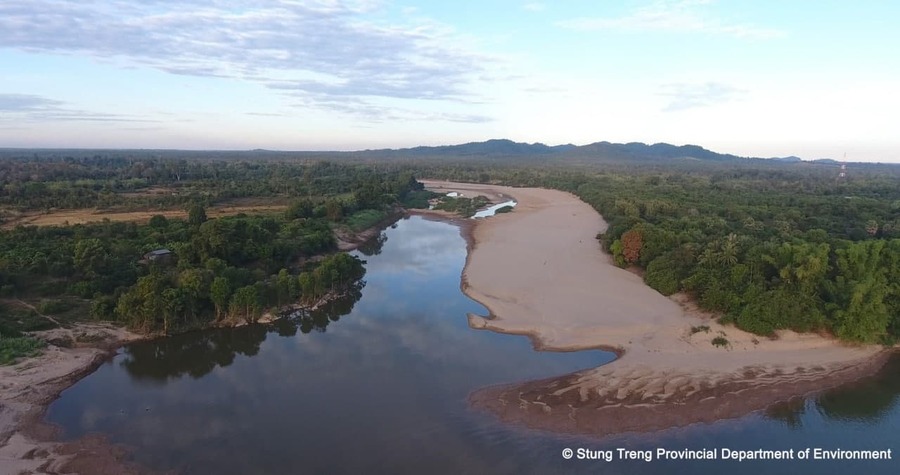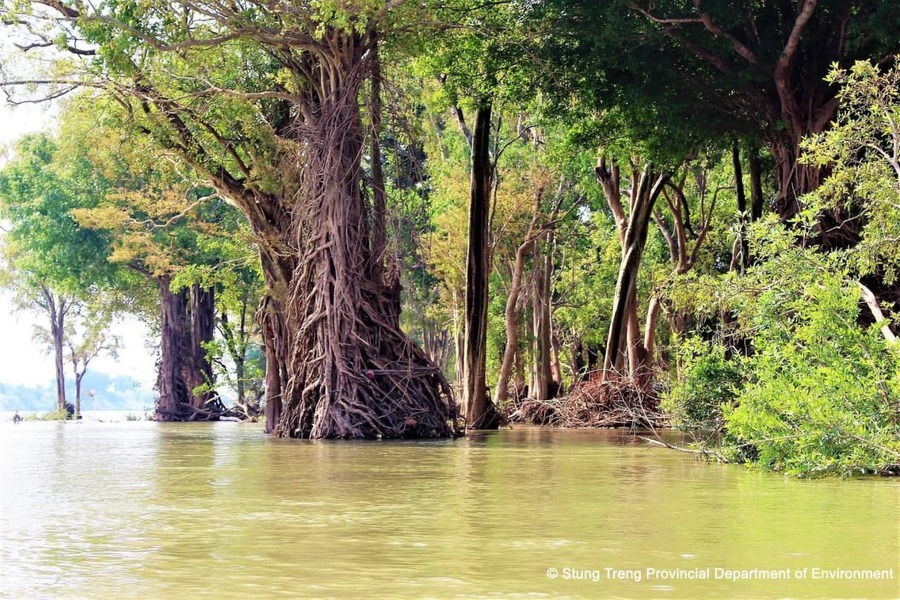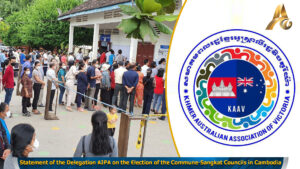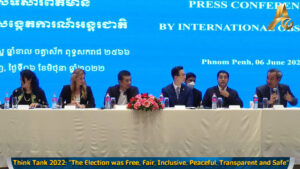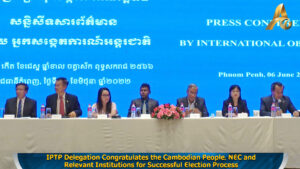Cambodia’s Ramsar Sites
Cambodia’s senior officials, rangers, and conservationists yesterday marked the World Wetlands Day 2021 in Stung Treng province.
Cambodia has currently five wetlands or Ramsar Sites covering 85,235 ha, according to the annotated list of Wetlands of International Importance. They include Boeung Chhmar and Associated River System and Floodplain, Koh Kapik and Associated Islets, Middle Stretches of Mekong River North of Stung Treng, Prek Toal Ramsar Site, and Stung Sen Ramsar Site.
Boeng Chhmar and Associated River System and Floodplain Site is in Kampong Thom and Siem Reap provinces with 28,000 ha. The site is a good example of near-natural wetlands that play a substantial hydrological and biological role in the natural functioning of two major rivers, Stung Stoung and Stung Chikreng. The area supports a large assemblage of plant, fish and waterbird species, many of which are listed as rare, vulnerable, or endangered, including the Siamese Crocodile Crocodylus siamensis, Mekong Giant Catfish Pangasianodon gigas and Giant Barb Catlocarpio siamensis. The site regularly supports more than 20,000 individuals of a number of large waterbird species on an annual basis.
Koh Kapik and Associated Islets is in Koh Kong province with 12,000 ha. The site consists of two main wetland types, estuarine waters, and intertidal mud, sand or salt flats, and the extensive mangrove stand is representative of a still-functioning mangrove habitat/ecosystem in the Gulf of Thailand and the Indochina Mangroves eco-region. The area plays a critical role in providing a nutrient source supporting coastal fishery in the near-shore and offshore waters of Cambodia, and it is home to globally threatened bird and mammal species such as the critically endangered Giant Ibis (Thaumatibis gigantea) and the endangered Sunda Pangolin (Manis javanica) and Indochinese Silvered Langur (Trachypithecus germaini).
Middle Stretches of the Mekong River north of Stung Treng is about 14,600 ha. A 40 km stretch of the Mekong River in the north of Cambodia characterised by strong turbulent flow with numerous channels between rocky and sandy islands that are completely inundated during high water, with higher alluvial islands that remain dry. It lies about 5km from the town of Stung Treng where the Se Kong river joins the Mekong river and 4 km south from the border with Laos. The site is home to a breeding population of the critically endangered White-shouldered Ibis (Pseudibis davisoni). The extensive and largely undisturbed channel islands provide important refuge and a food source for fish species during times of high flows, while the areas deep pools allow refuge for aquatic species, including the critically endangered Giant Mekong Catfish (Pangasianodon gigas) and the vulnerable Irrawaddy Dolphin (Orcaella brevirostris).
The Prek Toal Ramsar Site includes some of the most pristine floodplains in the Tonle Sap Biosphere Reserve in Cambodia in 21,342 ha. During the dry seasons, the Site is dry and covered mostly by freshwater swamp forests, but it floods annually, with the water depth reaching up to eight metres. Prek Toal is at the northwest upstream end of Tonle Sap Lake and the rise and fall of the lake’s waters play a vital role in maintaining its biological wealth. The forests trap large quantities of sediment, and the nutrients deposited stimulate the growth of plants and fish which support the high numbers of waterbirds and other wildlife at the Site. Prek Toal includes a range of habitats for a great diversity of globally threatened species such as the critically endangered river terrapin (Batagur baska), Siamese crocodile (Crocodylus siamensis), giant barb (Catlocarpio siamensis), and Mekong giant catfish (Pangasianodon gigas).
Stung Sen, the 9,293 ha site is located along the south-eastern edge of the Tonle Sap Great Lake, and mainly comprises seasonally flooded freshwater swamp forests. Along the Stung Sen River, there are gallery forests, lowstature shrub land, inundated and submerged trees, and extensive mats of herbaceous and aquatic vegetation which provide habitat for a variety of species. The vegetation of Stung Sen is strongly influenced by the exchange of water between the Mekong River, the Stung Sen River and the Great Lake, and the area is subject to an annual flooding cycle that makes it extremely fertile. The Site is an important spawning ground for several fish species such as Jullien’s golden carp (Probarbus jullieni) and small scale mud carp (Cirrhinus microlepis), a migratory pathway and feeding ground for waterbirds, and an important habitat for mammals. It is regionally important for supporting a number of globally threatened species such as the critically endangered Mekong giant carp (Catlocarpio siamensis); the endangered yellow-headed temple turtle (Heosemys annandalii) and Indochinese silvered langur (Trachypithecus germaini); and the vulnerable lesser adjutant (Leptoptilos javanicus) and smooth-coated otter (Lutrogale perspicillata).
